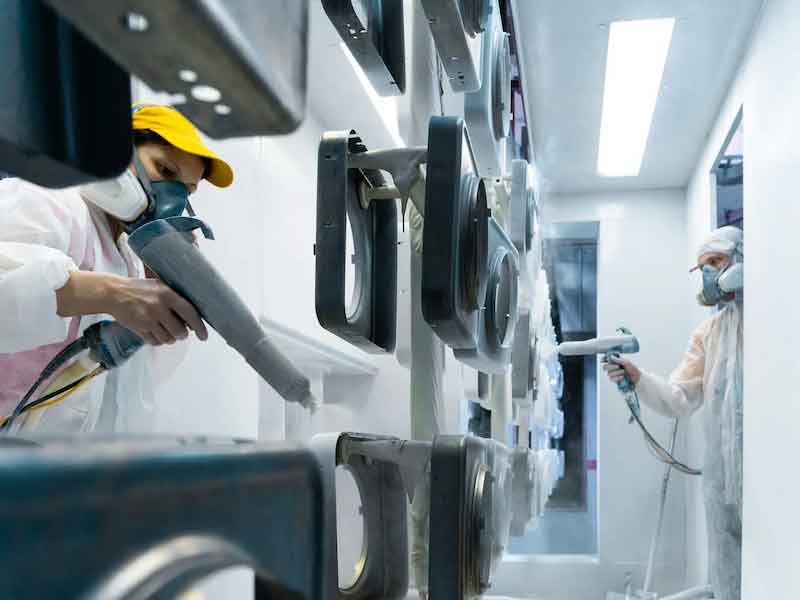If you are finding that your staff is spending a lot of time manually handling parts and suspect it is impacting your production rates, there are ways to streamline operations.
 Dan DavitzRecently I had the opportunity to consult with a manufacturing company regarding improvements to their finishing line. While reviewing their processes, I noticed they were handling parts repeatedly from one station to the next. Surprisingly, after discussing various problems and solutions, the additional handling of parts was not recognized by the company as a problem to be addressed. However, there is a significant cost to touch a part in any process, and it’s wise to know, as in every business, where your costs lie.
Dan DavitzRecently I had the opportunity to consult with a manufacturing company regarding improvements to their finishing line. While reviewing their processes, I noticed they were handling parts repeatedly from one station to the next. Surprisingly, after discussing various problems and solutions, the additional handling of parts was not recognized by the company as a problem to be addressed. However, there is a significant cost to touch a part in any process, and it’s wise to know, as in every business, where your costs lie.
Previously, the cost to touch a part for a mid-sized finishing line was approximately $0.35. Today, the cost to operate a finishing line can be as much as $1,500 to $2,500 per hour. Items to be considered into this cost include utilities, chemicals, paint, equipment, maintenance, labor, and overhead. Depending on the size of the part and the operation being performed, it can easily cost $0.60 or more each time a part is handled.
An Example of Becoming Efficient
In this example, parts were individually placed into totes from multiple welding and forming stations. The totes were then unloaded manually, one part at a time, and placed into a batch washer. The parts were then removed individually from the washer and placed back into totes for staging prior to painting. Then the parts were again removed from the totes to be hung individually on single bar paint racks. After painting, the parts were removed from the racks for packaging. Ultimately, every part was placed into a tote and rehandled an additional three times more than if they had been placed onto mobile, multi-tiered racks at the first welding and forming stations. The already racked parts would then be rolled into a multiple rack batch washer designed for the job and remain on the racks through the painting process. The total number of individual parts rehandled in and out of totes would be reduced from five to two.
Based on the information specific to this company, I estimated the cost to manually handle each part to be $0.60. Therefore, the additional three rehandling operations per part, multiplied by the 650 average number of parts painted per day, amounted to an extra cost of $1,170 per day, the equivalent of over $304,000 per year. This was an unnecessary expenditure at a time when production demands were not being met, overtime was a norm, and inflation was rising.
Using racks to hold mass quantities of parts hung for automatic batch washing eliminated the old manually loaded and unloaded batch washer, a known bottleneck in the entire operation.
Transporting mobile loaded parts racks in and out of an automatic batch washer specifically designed to handle multiple racks simultaneously would increase throughput for the entire finishing operation. These multi-tiered racks were also designed to increase parts density and production from 100% to 500%, depending on the part size. The increased production generated additional cost savings over and above those achieved by eliminating the rehandling of the parts themselves.
Rack Design: Make It Count
The design of the racks should allow the parts to be easily accessible without removal for any axillary operation such as masking, sanding, deburring, washing, draining, drying, painting, and curing, eliminating the need to remove parts from totes and putting them back again. The goal is not to remove parts from the racks until they are ready for inspection and packaging.
The rack design should be modular to accommodate easy changeover for various sizes and shapes of parts maintaining maximum part density both horizontally and vertically. Hooks should be interchangeable, when possible, for different parts as well as for cleaning.
Using racks to hold and transport parts versus using totes is also ergonomically a better solution. Even when a few parts are hung on a lower tier of a rack, the handling process is still easier than bending over to pick up every part out of a tote and put it back again multiple times a day between stations.
In conclusion, racking parts efficiently and correctly from the beginning of their processing will increase production rates and save tremendous costs in labor and rehandling. Examining these concepts and designs can dramatically improve your bottom line.
Dan Davitz is an industrial finishing line consultant with over 30 years of experience internationally, specializing in rack design. Contact him at Info@PrismStrategyAndDesign.com



































